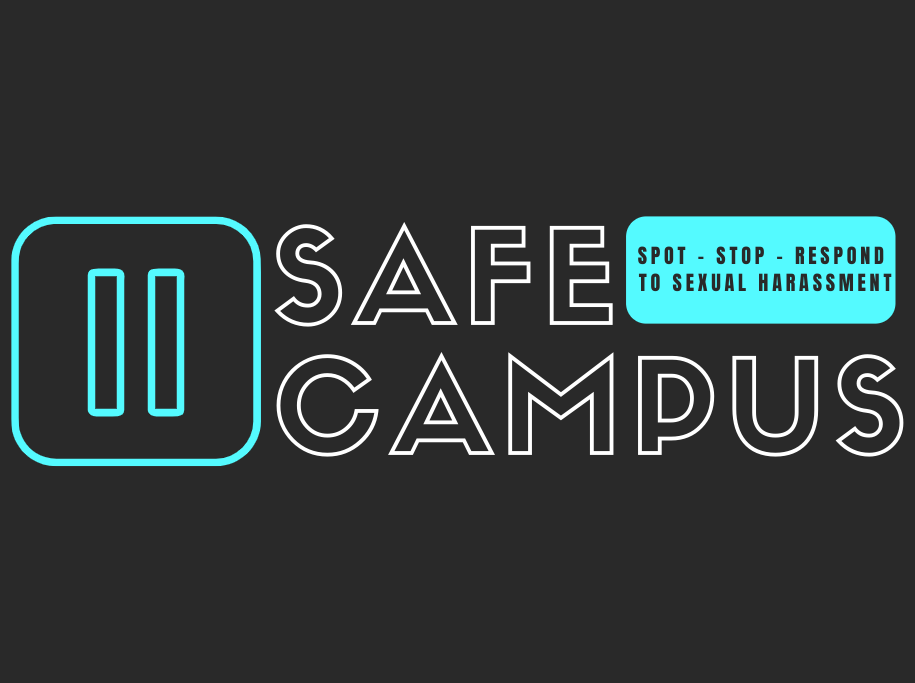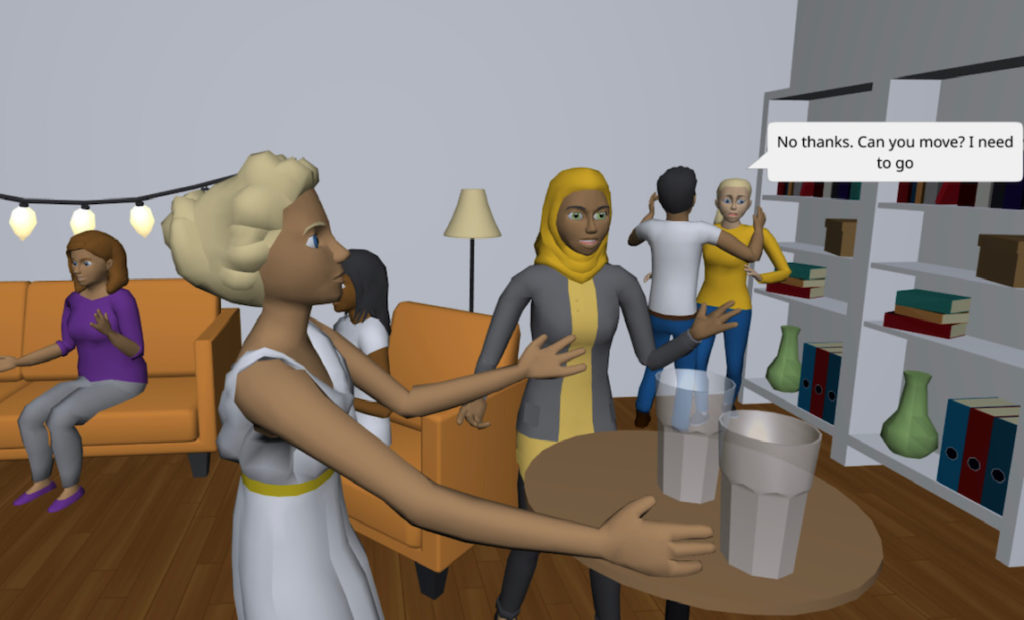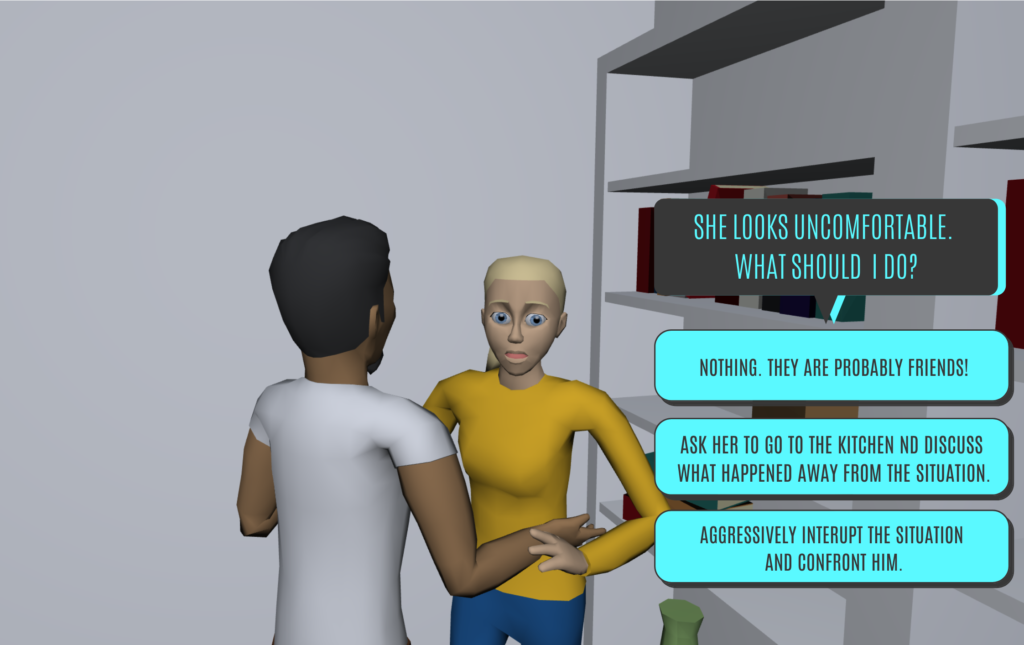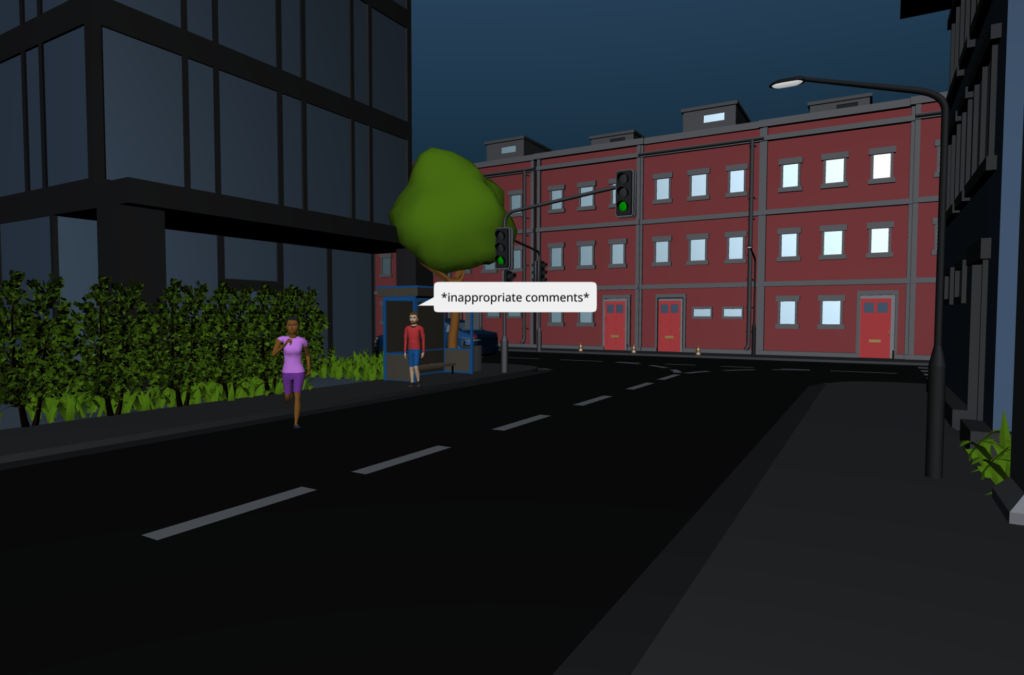
Safe Campus is an immersive training experience that uses virtual reality in order to educate students about how to take action before, during and after witnessing sexual harassment. The training experience builds upon previous successful corporate sexual harassment bystander training, studies of bystander intervention and research about university sexual harassment experiences and most common situations, in order to create a cohesive experience that guides the user through a series of realistic situations. This training is an alternative to the powerpoint and lecture format currently widely used within university sexual harassment classes. VR allows a user to be transported to a situation that feels as real as life, sparking a call to action. The ability to identify an example of sexual harassment, decide how to act and watch how this decision impacts the situation will equip the user with the knowledge and confidence that they can effectively spot sexual harassment, stop it and respond to it in the most effective and appropriate way. Safe Campus’ ultimate aim is to create just that by reducing violence towards women through the immersive training experience.
User Flow Diagram:
Using the most common women’s experiences from Brook and Dig In’s (2019) study, the user will enter these three scenarios:
- Witnessing sexually inappropriate behaviour in a club/party:



- Witnessing a friend sending/receiving unwanted explicit messages online.
- Witnessing catcalling:



A 2019 study into sexual assault and harassment in UK universities by the Brook charity and the student database Dig In, found that 56% of respondents shared that they had “encountered unwanted sexual attention.” The research found that 3% of male respondents reported being touched inappropriately, indicating that female students are much more likely to be sexually harassed (Batty, 2019). 49% of women respondents had been touched inappropriately, 26% of women said they had received unwanted sexually explicit messages and 53% of the respondents stated that the perpetrator was another student (Batty, 2019). Clearly, a new form of educational training is needed for students.


